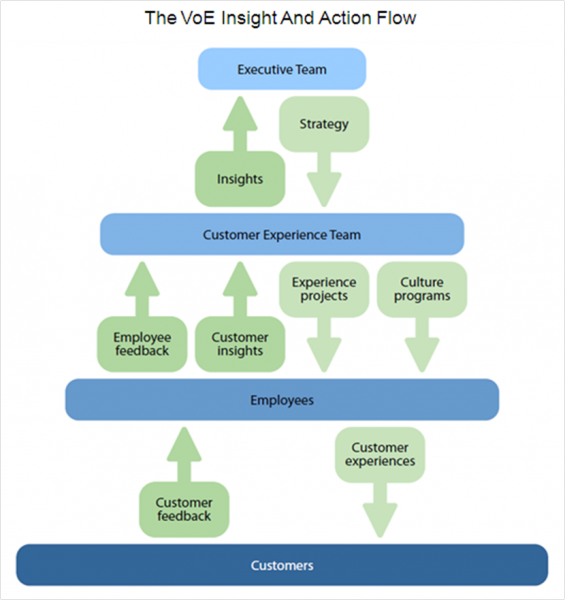Employees Are Customer Experience Pros’ Best Weapon
If you called American Express a few years ago to report a lost credit card, you got the card cancelled right on the spot. If it appeared under the couch a few minutes later, you were out of luck. You still had to wait several days for a new card to arrive. It was bad for you. It was bad for AmEx. Luckily, a customer care professional (CCP) noticed this phenomenon. And, luckily, AmEx had a formal program for CCPs to suggest policy changes to improve customer experience. If you call to report a lost card today, you can put a 24-hour hold on your card instead of cancelling it. If it turns up, you can have it reinstated — and then go use it. Everybody wins.
This solution may seem obvious looking back, but only an employee with unique contextual insight could spot it at the time. If your company isn’t taking advantage of this insight, you’re missing out.
As I describe in my new report, employees hold the key to great customer experiences. Why? Here are three reasons:
- Many employees observe customer interactions directly, so they can spot emerging customer needs and issues before they surface in traditional customer research.
- Employees also understand internal operations, so they’re in a natural position to identify root causes of customer problems and suggest solutions. Back-office employees have just as much to offer here as customer-facing employees do.
- In addition to having valuable insight, employees have enormous influence. They directly shape the processes and interactions that affect customers, so they can make arms-length changes to quickly improve customer experience.
To show how the voice of the employee (VoE) fuels customer experience efforts, I created a simple graphic outlining the flow of insights and activities (see below).* It’s time to start using this flow to your advantage.
To get started, take stock of your existing employee listening posts, from HR surveys to suggestion boxes. Form partnerships between the customer experience team and HR to formalize the program and divvy up the work. And start folding VoE into your existing voice of the customer (VoC) processes. The effort will pay off with better employee experiences, better customer experiences, and better business results.

* At a high level, and starting from the bottom left of the graphic, here’s how VoE insights and activities flow: Employees pick up customer feedback from their frontline interactions and combine it with their knowledge of the business to create useful insights. They then provide that insight up through the organization, along with feedback about their experiences as employees — this feedback is critical, because employee experience affects customer experience. At the top, the combined insights inform strategic decisions, and then they flow back down as part of strategy, projects, and programs. These projects and programs change internal practices and ultimately result in better customer experiences. And then the cycle starts all over again.